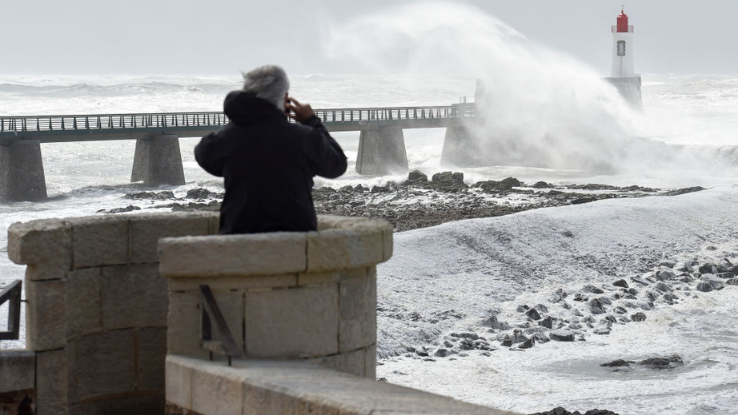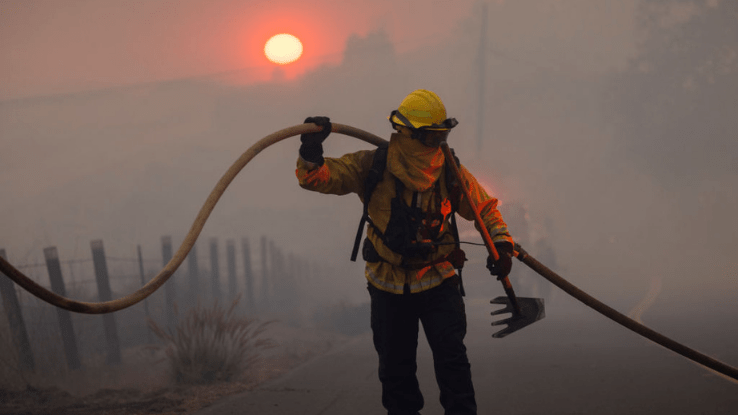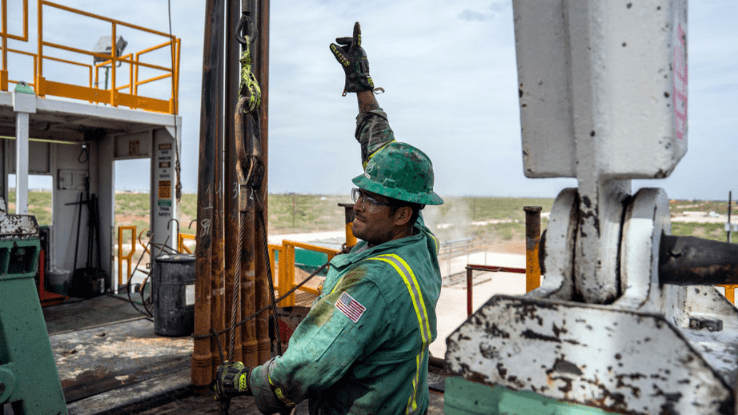Cross-Country Climate Crisis: A Regional Breakdown of Global Warming’s Longterm Effects

On June 1, 2017, the U.S. Climate Alliance was formed in response to the country pulling out of the Paris Agreement, an international treaty aimed at preventing climate change. More than 25 states, along with Puerto Rico and Samoa, have joined the bipartisan effort and committed to upholding the terms of the Paris Agreement, learning more about climate change and shifting towards sustainable legislation and practices.
The impacts of climate change are emerging in both predictable and unpredictable ways. Experts are continuing to track and research the different impacts of climate change within different areas and ecosystems. Collaborations, like the U.S. Climate Alliance, between different regions, agencies and governments are important so that policy can be responsive to the unique challenges that different areas face.
Though some states are prioritizing their responses to climate change more than others, the environmental crisis is impacting each of them in numerous ways. By separating the U.S. into different regions, it’s possible to see how climate change is affecting each area distinctly. This breakdown will examine regional impacts of the climate crisis across the US — and why the need for unity and change is more urgent than ever.
The Northeast’s Climate May Become Even More Unpredictable

The Northeast experiences four seasons, often receiving some of the most extreme heat and the snowiest winters across the country. Rising temperatures will mean more electricity use from air conditioners and other methods of cooling, especially in the summer. Sea levels are also expected to continue to rise. Much of the Northeast’s elevation is near sea level, and this is likely to create a shift in the available area people and businesses could call “home.”
While the Northeast historically hasn’t experienced many hurricanes, the effects of climate change have resulted in an increase of hurricanes in the region. Much of the Northeast’s infrastructure wasn’t built to withstand hurricanes. This, coupled with the growing intensity of hurricanes resulting from climate change, means the region will need a greater amount of support as this trend continues.
Superstorms and Superdroughts Are Coming For the Southeast

In Southeast states like Florida, Louisiana and the Carolinas, the growing number and severity of hurricanes is already well known. But what’s also going to be difficult for this area in the years to come is the increased potential for water scarcity. Drought.gov has documented an increase in record breaking droughts in the region. These recurring and severe drought conditions could decimate bayous and other areas in this region known for marine life and the lush, moist air quality necessary for local ecosystem survival.
A Wetter Northwest WIll Still Be Warming

Many of the symptoms of climate change are “hot and cold,” but the Pacific Northwest is a bit more “wet and warming.” Precipitation, especially in places known for rain, like Seattle and Olympia, may become frequent and heavier. More rain doesn’t mean that the area isn’t also susceptible to wildfires and water scarcity.
The Northwest has mountainous areas that hold dense snowpacks. These water supplies keep the surrounding land green and fertile. But rising temperatures can mean water shortages, drier conditions that are more likely to result in wildfires, and decreased snowpack that can mean fewer areas are receiving the water they need. Moreover, much of the Northwest relies on hydroelectric power to keep the lights on, so less water could create an energy crisis.
This might all sound contradictory. Didn’t we just say that the Northwest would be getting more water? Well, rainwater and snowmelt interact with the environment differently. Snowmelt slowly feeds streams and rivers, and is protective of the frozen soil below it, whereas large amounts of rain lead to flooding and erosion, and a relatively greater amount of that water escapes back into the atmosphere. As one researcher on the subject states, “hydrologically, [it] is a totally different beast.”
Scorching Flames and Smokey Skies Could Fill the Southwest

Containing parts of California, Nevada, New Mexico and other states, the Southwest is home to mountains, deserts and forests. The region has already been experiencing drought-like conditions for decades. How will climate change further affect this area?
For one, wildfires will become less of a “season” and more of an everyday issue. Rising temperatures paired with smoke from the wildfires could have dire consequences for the West Coast. For this reason, people may have to “mask up” regularly due to poor air quality outside. Brownouts could also result from the excess stress on the power grid stemming from people using air filtration systems to keep the smoke out of their homes.
Rising sea levels may not be as severe out West as they will be on the East Coast, however. The West Coast’s sea level is rising due to tectonic shift, and the water is rising much faster on the East Coast.
Will the Midwest Confront Its Coal Use?

Landlocked with the exception of the Great Lakes, the Midwest won’t have to worry as much about rising sea levels. However, regions like the Midwest and the Great Plains may experience population influxes as sea levels do start to rise and people from coastal areas move inland to escape the effects.
According to Energy.gov, ninety percent of the region’s power comes from coal. In addition to the often enumerated issues with coal power and the negative impacts of coal on the environment, the Midwest is poised to enter into a costly and harmful feedback loop as a result of their power policies. As temperatures continue to rise higher temperatures will make it more difficult to extract coal. Coal plants and the power lines supported by them will need more “cooling” periods to run without hindrance, which will tap into the states’ power supply. And given that the Midwest is one of the coldest regions in the nation and already uses a tremendous amount of power to heat homes, this extra drain on resources will prove to be difficult down the road.
Transportation Worries May Emerge From The Great Plains

Montana is the only state from the Great Plains region to join the U.S. Climate Alliance. Is this because it and similar landlocked areas aren’t feeling as much pressure from rising sea levels? No matter the reason, not being near oceans or the Great Lakes doesn’t mean the Great Plains will escape the effects of climate change.
The Great Plains could soon start to contend with increasing hurricanes, tornadoes and other severe storms. The many farms that populate the region may experience lower crop outputs as a result. The area is also where much of the U.S.’s oil and natural gas come from. Increasing storms and flooding will likely affect how most of these products are shipped out, potentially leading to shortages across the country.
Exterior States Have Massive Struggles of Their Own

States like Alaska and Hawaii and territories separate from the mainland are already dealing with negative effects of climate change. Alaska is experiencing massive permafrost thaws that have the potential to damage roads, airways and oil pipelines. Hurricanes have caused irreparable harm to Puerto Rico’s infrastructure, particularly its power grids. Guam and territories in the Caribbean are facing the ongoing loss of coral reefs, which comes with a whole host of related issues.
While these areas are far from each other, they’re united by a few similar issues. Being so far from the mainland, they rely on imported petroleum among other important goods and medicines. A climate disaster could cut off these territories from essential aid and supplies for days or weeks.
The Bottom Line? Unity Is a Must

After examining how climate change stands to affect different regions in the long term, “just don’t live there” cannot be justified as an appropriate response. Climate change is going to affect every region across the U.S. — even more so than it already is. It’s just going to look different for different areas. Combating the climate crisis is a massive undertaking, and it’s vital that states unite rather than compete in order to preserve our future.
The United States recommitting to the Paris Agreement under President Biden was a start. However, scientists are insisting, with increasing urgency, that countries who are signatory to the Paris Agreement are not on track to meet their energy goals. It’s important to remember that climate change isn’t an issue that comes and goes with different contractual commitments or elected officials. Climate change is a generational struggle that will continue to affect the globe in myriad ways. Now more than ever, it’s time to work together to reach a solution.





